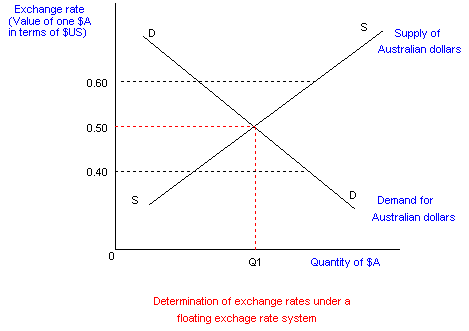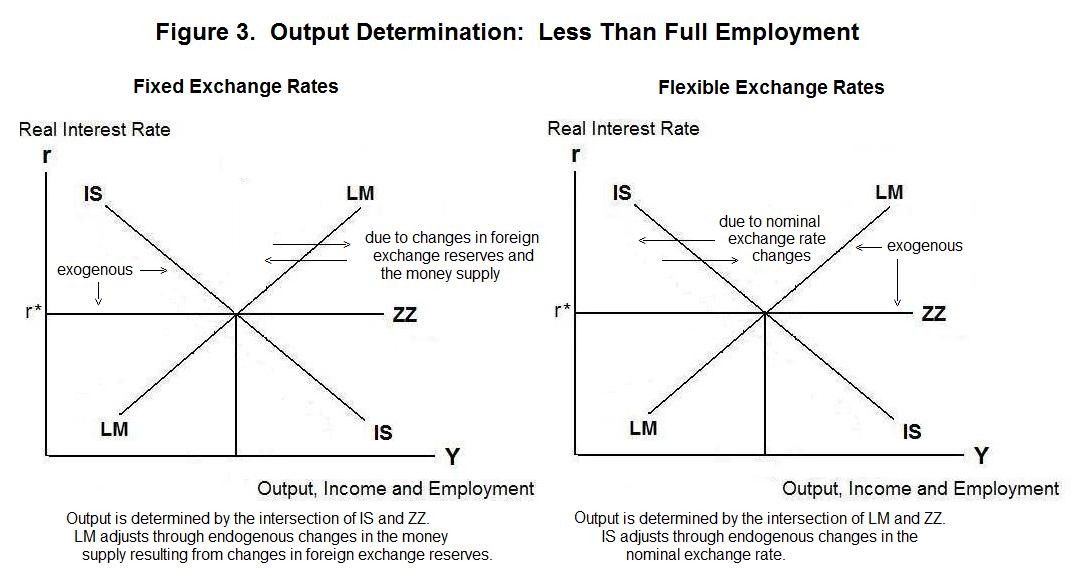The Foreign Exchange Rate & Fixed and Floating Exchange Rates
Post on: 16 Март, 2015 No Comment

The Foreign Exchange Rate
The price at which one nation’s currency is exchanged for another’s is the foreign exchange rate. An exchange rate exists between each pair of nations that engages in international commerce. Table 8-1 indicates the name and symbol of the currency unit for a sample of eight countries. It also indicates the exchange rates against the U.S. dollar of each country at the beginning of 1966, 1976, 1986, and 1996. Each exchange rate is quoted as the number of units of foreign currency per U.S. dollar. Thus the exchange rates in the table may be interpreted as the value of one dollar expressed in units of foreign currency. For example, in early 1996, $1.00 was exchangeable for 106 Japanese yen, 1.46 German marks, and 0.65 British pounds. With the exception of the dollar- pound exchange rate, this is the way exchange rates are conventionally quoted in the United States. Note, however, that international currency values are reciprocal in nature. If $1.00 is equivalent to 0.65 British pounds, the pound is equivalent to 1.54 dollars that is, $1.54. The dollar-pound exchange rate is conventionally quoted in the United States as dollars per pound.
As Table 8-1 indicates, exchange rates vary considerably over time. In early 1996, for example, the dollar was worth fewer German marks and Japanese yen than in 1966, 1976, and 1986. Over the years, the dollar has depreciated against the deutsche mark and yen that is, it has declined in value, or purchased fewer units of deutsche marks and yen. These foreign currencies appreciated against the dollar that is, they increased in value and became worth more dollars. On the other hand, note in the table that the dollar appreciated against the Italian lira and the British pound in the period 1966-1986. In other words, over that 20-year period the lira and pound depreciated against the dollar. Over the years, the strong currencies included in the table those that have appreciated against most other currencies have been the Austrian schilling, the German mark, the Japanese yen, and the Swiss franc. The Italian lira, British pound, and Canadian dollar have been weak currencies, depreciating vis-a-vis the U.S. dollar and most other major currencies. The U.S. dollar and French franc occupy an intermediate position, depreciating relative to the strong currencies but appreciating against the Italian, Canadian, and British currencies.

Figure 8-1 illustrates the exchange rate behavior of the U.S. dollar against two perennially strong currencies (the yen and deutsche mark) and two weak currencies (the lira and Canadian dollar) over the past 30 years. Because all these exchange rates are expressed as units of foreign currency per U.S. dollar, you may note through a glance at the figure that the dollar has trended downward (depreciated) against the yen and deutsche mark and trended upward (appreciated) vis-a-vis the lira and Canadian dollar. This, of course, is equivalent to stating that the yen and deutsche mark have appreciated against the dollar, while the lira and Canadian dollar have depreciated against it. Later in this chapter we will present a framework that helps explain why these exchange rate changes have occurred.














